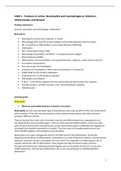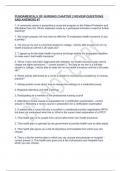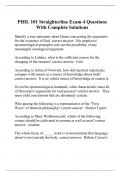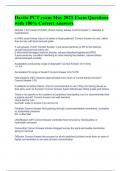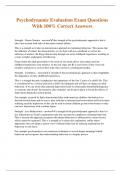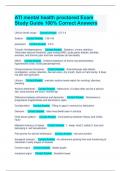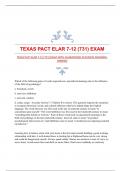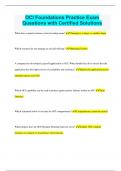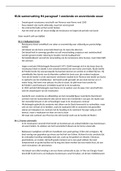Summary
Summary Immune Responses in Health and Disease BBS3014 - ALL CASES (5) -minor
- Course
- Institution
- Book
this is a summary of the 5 cases that have been discussed during the first period of the minor ''Immune Responses in Health and Disease''. The summary contains 5 cases in which the next topics/immune cells were described 1. Macrophages and neutrophils 2. NK-cells and ILC's 3. Dendritic cells ...
[Show more]
